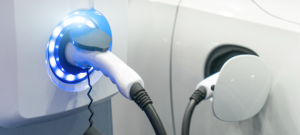Over the past few years, we’ve seen in-market shoppers lean into the used vehicle space; however, with new vehicle inventory continuing to rebound, we’re starting to see a reversal of fortune. Data in the first quarter of 2024 shows how the resurgence of new vehicle inventory is reshaping the automotive landscape.
According to Experian’s State of the Automotive Finance Market Report: Q1 2024, new vehicle financing increased to 41.93%, up from 37.93% in Q1 2023. Meanwhile, used vehicle financing declined from 62.07% to 58.07% year-over-year.
As a result, lenders witnessed a considerable impact on market share as some manufacturers continue to offer incentives. For instance, captives accounted for its highest share of new vehicle financing since 2010, leading at 61.75% in Q1 2024, up from 54.17% in Q1 2023. On the other hand, banks declined from 23.36% to 20.65% year-over-year and credit unions dropped from 17.02% to 9.69% in the same time frame.
Leasing grows as new vehicle inventory rebounds
As dealers look for ways to move metal and more incentives become available, consumers are choosing to lease.
For example, the percentage of new leasing climbed to 24.12% in Q1 2024, up from 19.33% in Q1 2023. In addition, the average monthly payment for a leased vehicle declined from $602 last year to $595 this quarter.
Interestingly, SUVs made up four of the top five leased vehicles in the first quarter of 2024; with the Honda CR-V at 3.12% and Telsa Model Y at 2.69%. They were followed by the Nissan Rogue (2.35%), Chevrolet Equinox (2.21%), and Honda Civic (2.02%).
Loan amounts continue to stabilize
When taking a deeper dive into the report findings, data shows the average loan amount for a new vehicle decreased from $41,115 in Q1 2023 to $40,634 in Q1 2024. Though, the average interest rate slightly grew to 6.73% this quarter, up from 6.61% last year—resulting in the average monthly payment increasing $3 to reach $735.
On the used side, the average loan amount dropped $498 year-over-year to $26,073 in Q1 2024 and the average interest rate went from 11.40% last year to 11.91% this quarter, leading to an average monthly payment of $523, from $521 in the same period.
As we witness consumer preferences continue to shift, it’s important for automotive professionals to understand the current industry trends in order to properly assist those who are in the market for a vehicle and prepare for what’s to come in the near future.
To learn more about automotive finance trends, view the full State of the Automotive Finance Market: Q1 2024 presentation on demand.



